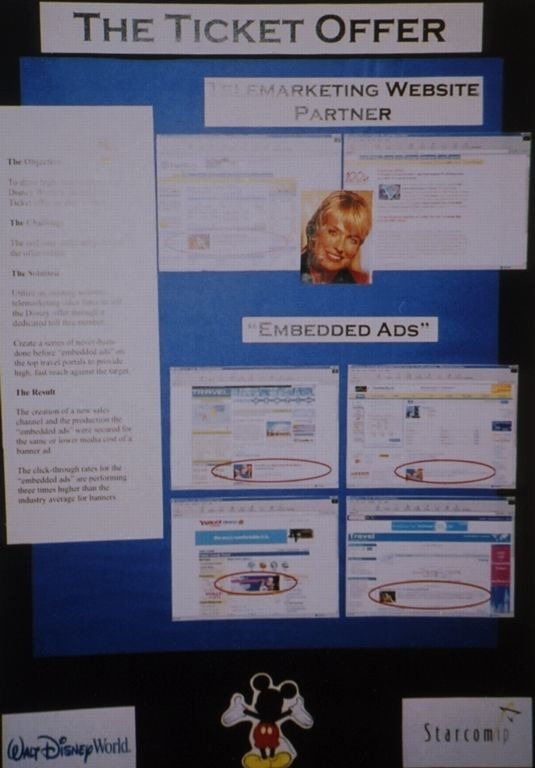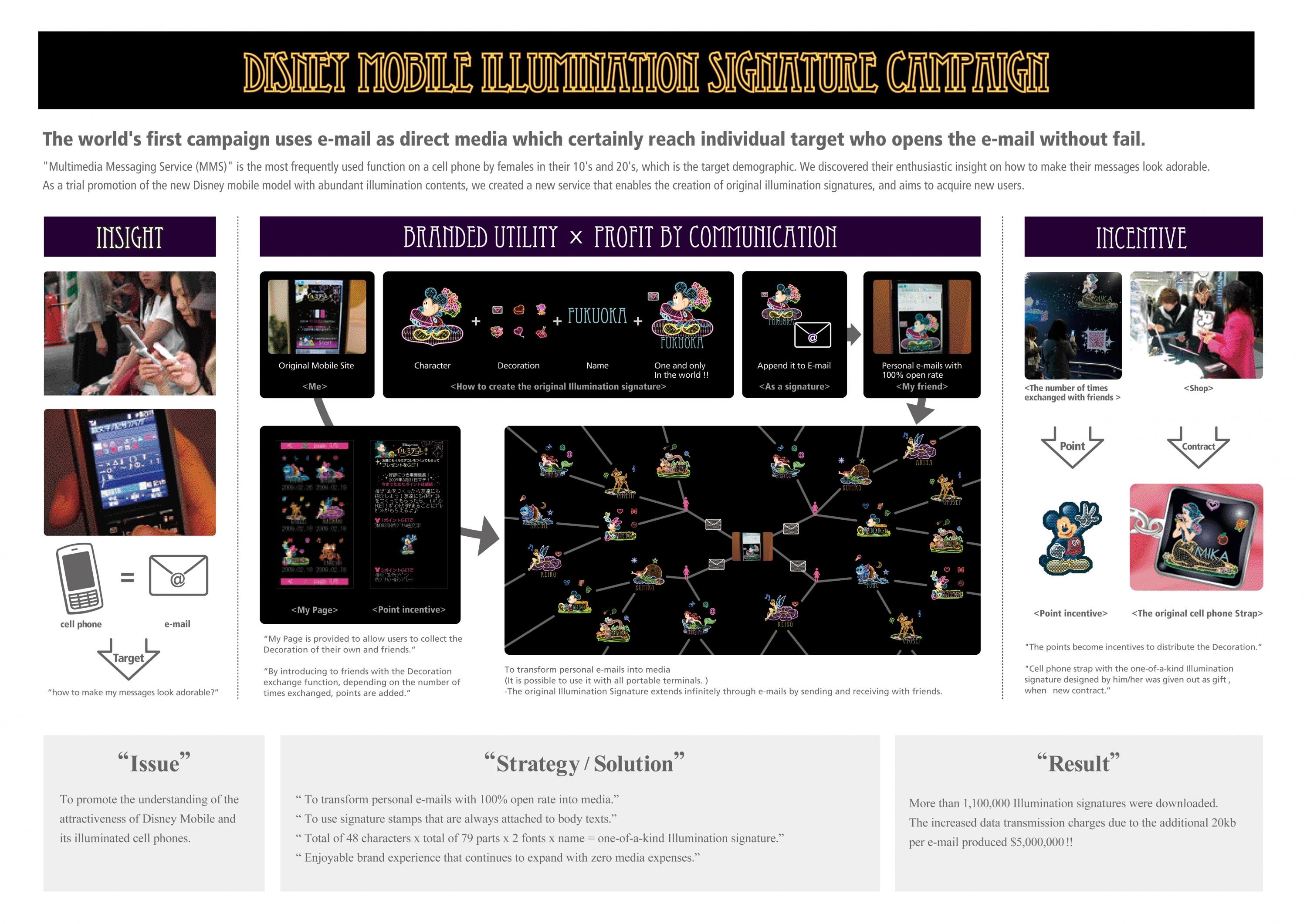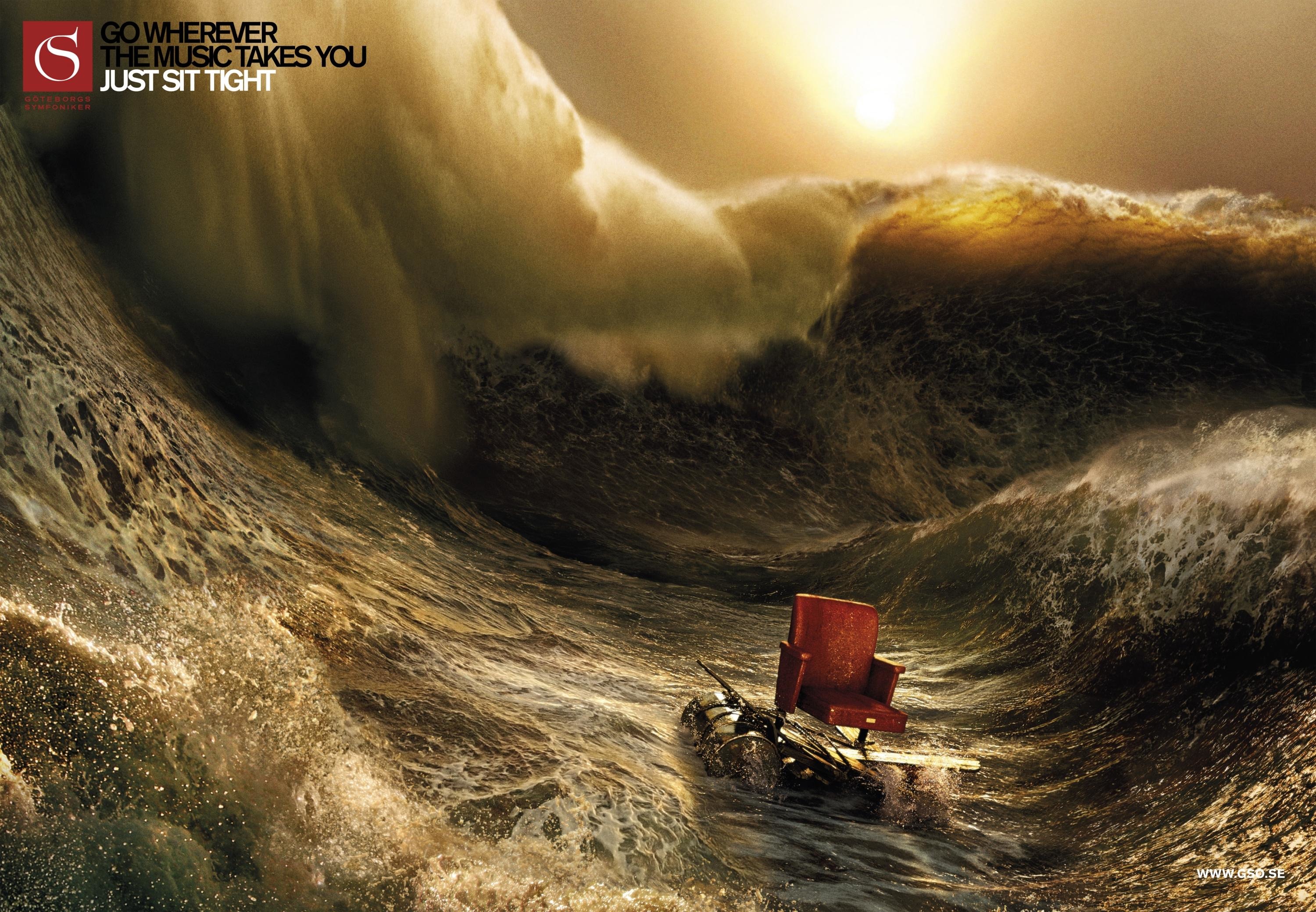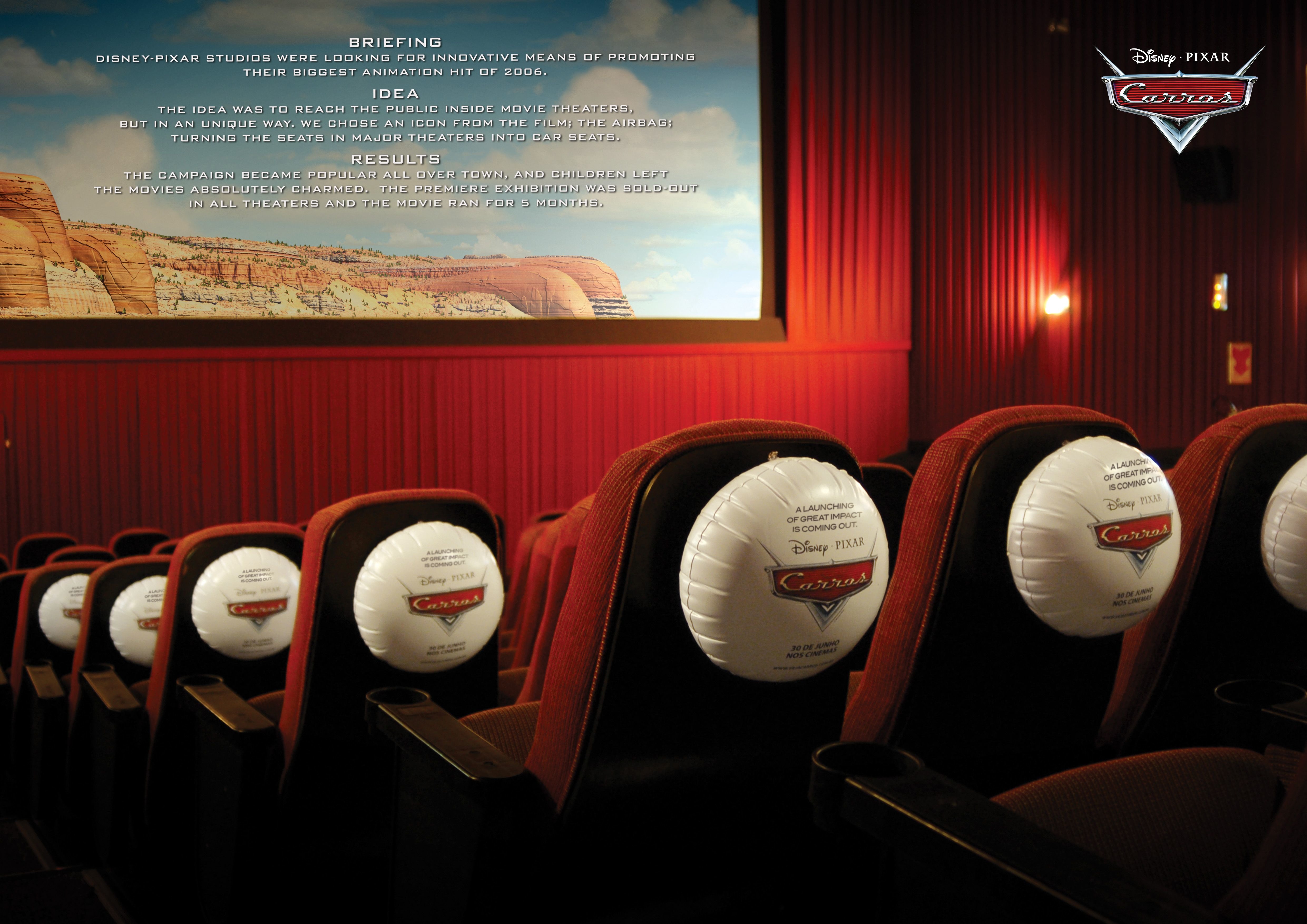Cannes Lions
TICKET OFFER
STARCOM WORLDWIDE, Toronto / DISNEY / 2002

Overview
Entries
Credits
OVERVIEW
Description
The first communication goal was to drive awareness of a special Disney World offer where if a 7-Day park ticket was purchased by April 20th, the second ticket would be discounted by 50%. Media also had to maximize the reach potential quickly against the desired target of families as the offer was eight weeks in length running from mid-February to the end of the first week in April, 2002.
. Once the end-user clicked on the ad, they would be sent to the destination offer page http://www.disney.ca/vacations/disneyworld/offer/index.html in English and French which detailed that in order to purchase the offer they either had to visit a Disney Store or call their travel agent. They could not purchase the offer online. Given that the Ticket Offer could not be purchased online on the Disney website, the first media solution was to partner with and utilize Expedia.ca’s existing telemarketing sales force to sell the Disney offer through a dedicated toll free number. The actual sales as a result of the media could then be captured and analysed on a cost-per-order basis and then be applied to future learnings. Media created a brand new sales channel for Disney where one did not previously exist. The message was changed to add the toll free number and media further leveraged both a never-been-done-before “embedded ad” on the home page of Expedia.ca which directed the end-user to a jump page which promoted the toll free number. Media also secured the creative production of the home and jump page and the use of the telemarketing sales force as part of the paid media buy. The “embedded ad” on Expedia.ca ran for four weeks in total, one seven-day flight every other week.The other media solution was to create a series of permanent “embedded ads” on the top Canadian travel portals to provide high, fast reach against the desired target. The ads were permanently fixed on the highest traffic pages in order to maximize reach potential very quickly. This was executed on the Travel hub page of Yahoo.ca, Sympatico.ca, Canoe.ca and the home page of Travelocity.ca. Both Sympatico.ca and Travelocity.ca were executed in English and French. The creation of the “embedded ads” lent greater validation to the message as the ad appeared to be endorsed by the site itself. Unlike a newspaper or magazine ad of this nature the “embedded ad” was not branded “advertorial”. All of these executions ran the full length of the campaign flight.None of the sites had ever done the telemarketing initiative or the “embedded ad” execution before and as a result had to re-design their web pages in order to accommodate the initiatives. Media paid either a lower or a similar CPM for the “embedded ad” versus a standard banner ad as well as leveraged the production of all the ads as part of the paid media buy. Given that the Ticket Offer could not be purchased online on the Disney website, media thought of the idea of utilising Expedia.ca’s existing telemarketing sales force as a means of creating a new sales distribution channel for Disney. Media brainstormed the idea of dedicating a separate toll free phone number so that sales could be directly tied to the media spend and a return-on-investment metric could be established. Media negotiated the addition of a toll free number and the use of the sites existing telemarketing sales force as a value-add to the media buy. In order to generate mass reach, media also created and secured permanent, never-been-done-before placements on the Travel hub page of Yahoo.ca, Canoe.ca and Sympatico.ca and the home page of Expedia.ca and Travelocity.ca. The placements, coined “embedded ads” by Starcom IP resembled the sites actual content. The layout of the sites had to be re-designed in order to accommodate the new creative.
Media negotiated the “embedded ad” units at either a better or the same rate as a traditional banner ad as well as had the sites produce the creative at no charge to Disney. This submission is special due to its innovation in finding an offline marketing solution that was over and above the online media objectives of driving message awareness and leveraging this solution as value-add to the media buy. This submission is also special because it created new online real estate with five major Canadian websites where the reach potential against the target would be quickly generated which was a key communication objective for a limited time offer.Expedia.ca was a great idea because it provided Disney with a new marketing solution to sell its offerings in Canada when the consumer could not purchase their offerings online. The “embedded ads” were a great idea because they provided high, fast reach against the target in addition to being permanently placed on the page so that the message would never be missed as well as the ad looking like the site endorsed it and therefore lent itself to higher credibility with the end-user.
This submission should win because it looked beyond the traditional media scope of driving awareness, traffic and sales which are standard media objectives to identifying an online sales limitation and finding a business solution for that limitation and leveraging that solution as value-add to the media buy.
Execution
Given that the Ticket Offer could not be purchased online on the Disney website, media thought of the idea of utilising Expedia.ca’s existing telemarketing sales force as a means of creating a new sales distribution channel for Disney. Media brainstormed the idea of dedicating a separate toll free phone number so that sales could be directly tied to the media spend and a return-on-investment metric could be established. Media negotiated the addition of a toll free number and the use of the sites existing telemarketing sales force as a value-add to the media buy. In order to generate mass reach, media also created and secured permanent, never-been-done-before placements on the Travel hub page of Yahoo.ca, Canoe.ca and Sympatico.ca and the home page of Expedia.ca and Travelocity.ca. The placements, coined “embedded ads” by Starcom IP resembled the sites actual content. The layout of the sites had to be re-designed in order to accommodate the new creative.
Media negotiated the “embedded ad” units at either a better or the same rate as a traditional banner ad as well as had the sites produce the creative at no charge to Disney.
Similar Campaigns
12 items







